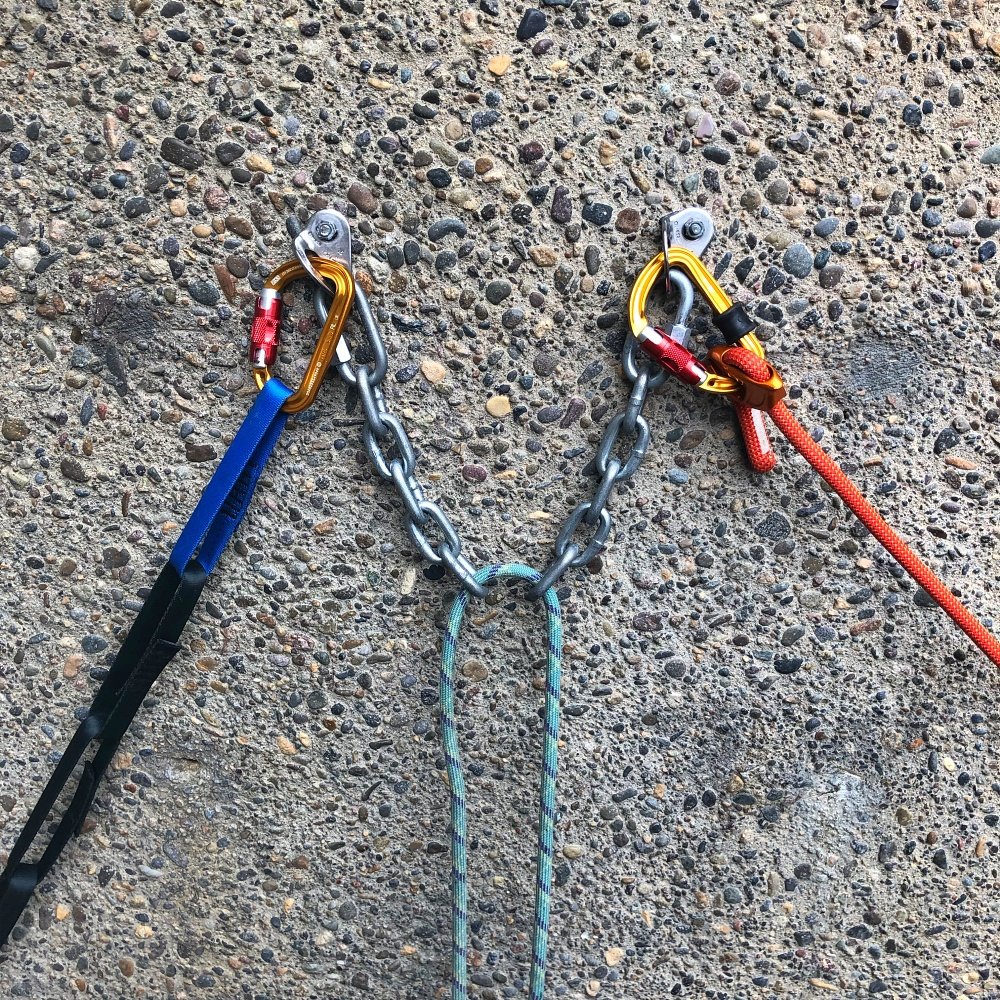Creating redundancy in rappel anchors
Say you have a rappel anchor like the one shown below. The bolts are solid, and you're standing on a decent ledge. In this case, many people would be just fine with each partner clipping to one bolt as shown, and rigging to rappel.
However, each person is clipped to 1/2 of the anchor system, with no redundancy. If the bolts are at all questionable, or if you're on a hanging stance with your weight on the hardware, many people would prefer some kind of rigging that connects both bolts, in the highly unlikely event one of them fails. It's very simple to do and takes a few seconds with gear you already have, so why not?
Let's look at some ways to do that.
(Hopefully this is blindingly obvious, but the last person to descend cleans whatever extra gear you've added.)
Method 1 - Connect each “half” with a quickdraw
Schweet! Now, each partner can clip to “half” of the anchor, knowing that it's connected to the other half. You can clip your tether, or the quickdraw, to any part of the anchor hardware that's convenient.
Method 2 - Use a “real” anchor (quad, 120 or 60 cm sling)
Whatever anchor system you used on the way up, you can probably also use it on the way down.
Note, if you’re using a pre-rigged or stacked rappel, you only need one anchor for descending. After both partners are pre-rigged, unclip the quad and send it down with the first person. If you're not using a pre-rigged rappel, then you'll probably need two anchors for descending. (Which should not be a problem, because you of course used two anchors on your way up.)
Quad
Because the quad provides a pair of redundant clipping points that can be pulled in different directions, this can be good at a hanging stance so one partner doesn't yank the other one around. In the photo, we’re using a 180 cm Dyneema sling. Learn lots more about the quad anchor here.
Notice how the green carabiners are clipped over the top of the quick links. If there was a chance of a large load on the carabiners, this is not best practice, because the carabiners can sometimes be loaded at a strange angle and even break. However, the loads in this situation are so low, it's fine to clip them like this.
Clipping on top of the anchor hardware also makes it a lot easier for someone to clean the anchor while the rope is loaded.
120 cm / double sling with a bight knot
Here’s a 120 cm sling, tied with a figure 8 on a bight for a statically equalized anchor. (Isn't that a pretty blue? It's an Edelrid Aramid sling, which is quickly becoming my new favorite for anchor building. It's very durable, super strong, and best of all, really easy to untie after loading.)
Note the figure 8 on a bight in the sling rather than an overhand. Doing this takes up a bit more of the cord, moving the master point slightly higher, and makes the knot even easier to untie.
60 cm sling with girth hitch
Only have a single length / 60 cm sling and the bolts are reasonably close together? No problem. Clip each one and make a girth hitch master point. If you tied an overhand knot you’d probably need a longer sling, but a girth hitch takes up so little material that you can use a 60 cm.
You get the idea. Each of these methods connects the two “halves” of the anchor, giving full redundancy for both partners on your way down.





